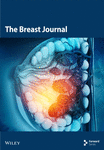The Experience of Waiting for Diagnosis After an Abnormal Mammogram
Abstract
In order to better understand the experience of women following abnormal screening mammogram and before definitive diagnosis, we undertook a series of focus group interviews in six geographic areas in the province of British Columbia, Canada. While all 33 participants had experienced abnormal mammograms within the previous year, each group included women with a range of ages and diagnostic outcomes. Verbatim transcripts of all focus groups were subjected to qualitative secondary analysis using interpretive descriptive methods. Through a process of grounded inductive analysis, conceptual themes within the data were identified and tested. The findings of this study provide an experiential account of common patterns within the structure and process of waiting for diagnosis. The accounts depict the way the women experienced time, their individual and common responses to waiting, and the impact of health system factors, including provider communication. These findings confirm that, regardless of its outcome, waiting for definitive diagnosis after an abnormal screening mammogram is an intense and often agonizing experience for the women involved and for their families. Furthermore, our results highlight the relevance of such issues as information systems, support, coordination of services, and health care communication, and underscore the important role that service delivery factors can play in making such experiences bearable. ▪




